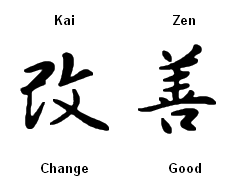Climate chage and immersive virtual worlds
Aug 20th, 2010 by roncin
‘Climate change and immersive virtual worlds’ or more accurately, ‘Will environmental discomfort caused by climate change accelerate the demand for immersive virtual worlds’?
A few weeks ago I took the time to finally read Tim Flannery’s ‘The Weather Makers’, a nicely presented introduction to human-induced climate change for the layperson such as myself. I’m not about to enter a debate on the politics or economics of global warming, but one idea which struck me after reading was ‘Should I move further North to beat the heat?’…I hate sweltering summer heat, and would gladly trade in perma-tan for perma-frost. Or is there another way to avoid the discomfort?
Let’s envision a scenario – the year is 2022, and all of the worst case scenario predictions have come to pass. Parents scold their children for playing outside in the dangerous UV-enfused sunlight, and encourage them to stay at home. Air quality requires us to wear protective masks between the hours of 9AM-6PM (nevermind the smell~). Tourism has come to a standstill. Honeybees have completely disappearing, and whatever that entails has occured. Danger is everywhere, but we still have technology to protect us!
…hopefully the direction of my story leads you to jump to certain conclusions. Who wouldn’t want to enjoy a second life in an immersive virtual world? Can’t go to the Maldives because…well, they’ve been swallowed by a rising ocean? Maldives 2.0 fills that void! Thinking about visiting your aging aunt in Toronto, but the cost of air travel is now priced out of your reach, don’t worry – an online visit to her virtual home can be just as satisfying.
I think we’ve all seen our share of movies where futuristic scenarios such as these have been played out to some extent. Admittedly, they seem bleak and lifeless in comparison to the fresh-air freedom we currently enjoy. But, if we are going to eventually sacrifice the comforts of modern life, having a platform such as Second Life (or its future self) would be preferable to solitary alternatives, wouldn’t it? In fact, the more I think about it the more I support such a transition, despite it’s dehumanizing potential. My choice to travel to the museums of Europe in person has severe CO2 implications, but minimal impact if I choose instead to visit them online. Even taking an online class is a small step. Instead of driving our cars (forgetting for a moment that most students don’t have the budget to drive/park at UBC) we boot up our computers.
I’m not an uber-environmentalist, but in a world where hurricans, mass flooding, earthquakes, wildfires and other climate catastrophes are sending a clear message about the instability of our modern behaviour – I’m willing to telecommute on a more frequent basis, both for business and pleasure.
![3058676922_c5fc2b5793[1]](https://blogs.ubc.ca/roncin/files/2010/08/3058676922_c5fc2b579313.jpg)




